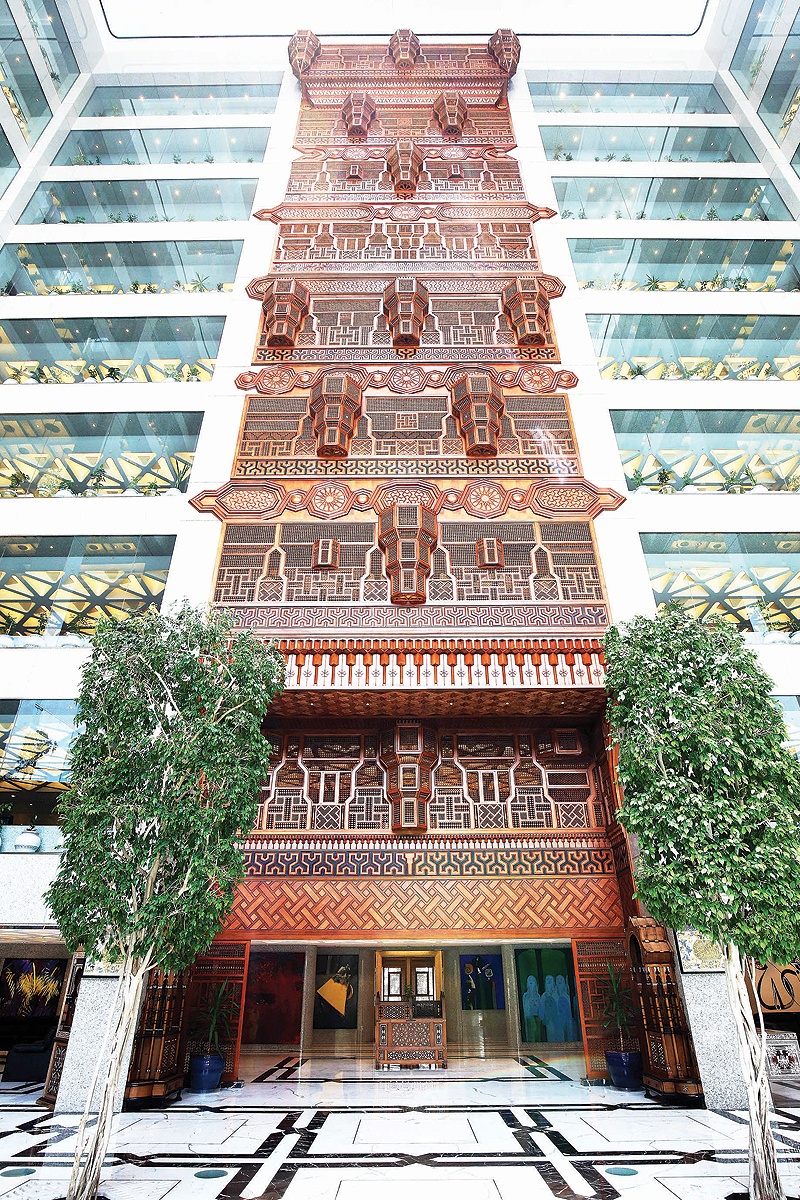Celebrating Arab artists and artisans


Kuwait boasts a bevy of unique and beautiful landmarks, museums and interesting places to visit, though many of them are not well known. Among the most amazing of Kuwait's hidden gems is the beautiful Arab Fund for Economic and Social Development (AFESD) building, known locally as the Arab Fund building.
Designed by local architectural firm Pace, the building was completed in 1994 at a cost of $150 million over a 50,000 square meter location in Shuwaikh. From the outside, the structure seems modest and unremarkable. Step inside, however, and the wonders of the Arab world are revealed.


On a recent visit to the Arab Fund, Kuwait Times explored the many treasures the building homes, while also learning more about the structure's unique design. The brainchild of Abdlatif Al-Hamad, the director general and chairman of the board of directors, the Arab Fund headquarters is a labor of love, a testament to the craftsmanship and creativity of the Arab world and a commitment to the Arab world's future.


When one enters the building, the first experience is of light. The eight-storey atrium, lit by floor-to-ceiling panels of windows along one wall, invites a soft, quiet light, in sharp contrast to the harsh desert sun outdoors. A hushed quiet pervades the space, woven through by the music from the soft bubbling of a Syrian tiled water fountain that cleans the ears from the honking of cars and industrial noise of Shuwaikh.
Throughout the atrium are strategically located various art installations, traditional and modern paintings and handicrafts from across the Arab world. These artisanal aspects, including the tallest custom-made mashrabiya in the world, highlight the skills and craftsmanship of Arab artisans around the region.
Dominating the atrium, the eight-storey mashrabiya stands 37 meters high. Built with traditional woodworking techniques by craftsmen in Egypt, it is created through the stacking of five separate panels showcasing the traditional window coverings once popular in North Africa and the Levant.
"The idea is to try and recreate the feeling of a traditional Arab home. In the old days, our houses would have a main atrium and all the rooms were around it," explains Eng. Osama Wanas, head of maintenance of the Arab Fund building.
Tradition combines with modernity to create a unique artistic environment. Paintings by modern Arab artists like Hussain Madhi (Lebanon), Nizar Sabour (Syria), Ghadah Alkandari (Kuwait), Ja'far Eslah (Kuwait) and Mustafa Abd ElMu'ati (Egypt) share space with historical artifacts. In the center of the main atrium, for instance, stands a nearly 200-year-old hawdaj used to transport the covering of the sacred Kaaba from Egypt to Makkah. Across the atrium, a bridal chair made in Syria and an Egyptian khayamiya tent, hand-embroidered in Arabic calligraphy, represent the past.
On the third floor, 1.5-ton chandeliers from Morocco add illumination to the soft natural light streaming in from the floor-to-ceiling windows. A narrow bridge separates one of the building's two diwaniyas from the famous Mamluk meeting room, created out of heavy carved oak and ornately paneled walls in the style of 12th century Egypt. A massive inlaid table and carved masharbiyas showcase medieval Egypt's grandeur.
Downstairs, the Damascene diwaniya offers Arabian comfort to visiting VIPs with a gentle bubbling water fountain and cool tiled floors. Around the corner, the Tunisian meeting room showcases the craftsmanship of Tunisian artisans with exquisite carved Tunisian stonework. A massive marble conference table reflects soft light from the Jordanian stone in the surrounding columns, arches and floors, and Moroccan cedar wood in the ceiling scents the air.
The entire building is spotlessly clean, dust free and impeccably maintained. Modular design in the furnishings allows almost any room or office to be reconfigured as needed. The atrium floor, entrances and reception areas as well as the stairwells are tiled in white and grey Italian marble.
Every detail of the building - from the cabling beneath the office floors to the light sources - has been designed with practicality, beauty and careful planning in mind. Hydroponic trees stationed in rotating planters embedded in the atrium floor can be rotated monthly toward the natural light from the one wall of windows, thus preventing the trees from growing slanted over time. Songbirds in small cages scattered throughout the atrium add a light note of nature to the atmosphere.
Islamic art and geometric patterning is carried as a theme throughout much of the building's public areas, in the art, furnishings and designs.
A modern marvel, the Arab Fund building is not only home to the best of Arab art and craftwork, but also a piece of art itself.
By Jamie Etheridge


